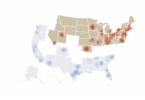From tech-savvy 20-somethings to value-seeking seniors, tailor your plan to appeal to different generations
By Megan Craig
When it comes to marketing, no approach works perfectly for every consumer. That’s particularly true in marketing to people from different generations—the same tactics won’t work for everyone.
Why? Technological advancements, in particular the invention of smart mobile devices, have created a gap in the way consumers of different ages respond to marketing from different channels, says Shanti Maung, brand strategy manager at Trendera, a boutique marketing firm specializing in trend forecasting, brand strategy and generational research.
For example, while a 20-something millennial might click through an ad on Instagram, a baby boomer would never see that ad in the first place, since they’re generally not users of that platform.
“If you want to take a one-size-fits-all approach to marketing, that’s a straight path to failure,” says Pam Danziger, a luxury/retail market researcher and founder of Unity Marketing in Pennsylvania. “If you’re marketing to baby boomers and millennials the same way, you’re doing it wrong. The consumer mindset is really different among generations.”
Millennials (Generation Y)
Ages: 22–37
General housing needs: This generation is into flexibility, so smaller homes or condos tend to catch their interest
Where you’ll reach them: Online, particularly on Instagram, Snapchat and YouTube, or on streaming services like Netflix
Millennials are a wide-ranging group, but many are digital natives. They’re always online, whether via desktop or mobile, so marketing to them by electronic means is a must, says Melissa Hayden, a senior account executive at Six Degrees branding and marketing research firm, in her blog post, “Marketing to Different Generations.”
“They are accepting of marketing messages insofar as they can see what’s in it for them,” Hayden wrote in the blog post. “They need to be heard, acknowledged and entertained.”
According to Hayden, members of this generation also tend to make social or ethical purchases, so promoting community-mindedness will win bonus points with millennials.
Generation X
Ages: 38–53
General housing needs: Gen Xers are interested in homes that suit the needs of their established families but don’t cost a fortune
Where you’ll reach them: Online, particularly on Facebook, Twitter and LinkedIn, or on cable television
Generation X is about half the size of millennials and boomers, but this relatively small group still has serious buying and selling power in the housing market. They’re targetable on social media, but also through some more traditional channels, since they clearly remember a time when life didn’t revolve around the internet, says Brent Green, a generational marketing expert based in Colorado.
“Gen X is living in both the digital and analog world,” Green says. “You can still reach them by thinking in terms of programming—news channels, maybe entertainment programs like American Idol—but they also have digital sophistication overall.”
When trying to reach this group, be sure your messaging focuses on cost-savings and long-term benefits.
Baby Boomer Generation
Ages: 54–72
General housing needs: Many boomers are empty-nesters looking to downsize from the huge family homes popular in the 1990s to something smaller and more manageable, but with nice finishes and high-end amenities
Where you’ll reach them: Facebook, or through traditional media channels like TV commercials and magazine or newspaper ads
Boomers are a huge group, and reaching them is perhaps the easiest of any generation. They watch traditional TV, many still read newspapers and magazines, and they love coupons—so to market to this group, use a combination of a bit of everything.
“We’re networked, we’re on social media, we’re using smartphones, so it’s not like those things don’t apply,” Danziger says. “But boomers are reachable elsewhere, too, unlike millennials.”
No matter where you’re marketing to boomers, the message is the important piece, she says. Remember that this group is aging but not old, and tailor messages to incorporate both the past and the future.
Silent Generation (Eisenhower Generation)
Ages: 73–90
General housing needs: These seniors are moving away from traditional housing and into long-term active adult neighborhoods or buildings, particularly near family members
Where you’ll reach them: Mostly through the most traditional media channels or through snail mail
People in the oldest generation—sometimes called the Eisenhower Generation but more often the Silent Generation—made it through most of their working lives without having to use the internet. Therefore, they tend to be more reachable through traditional marketing and advertising tactics, like direct mail and television.
“A busy part of the industry is trying to figure out what they’re looking for because they have a lot of influence on eventual products and services to facilitate late-life living,” says Brent Green, a generational marketing expert based in Colorado.
This group values personalized interactions, so mailings, phone calls or knocking on doors works best to market to them. 
Generalizing Generations
Deciding how to reach consumers by grouping them into generations can work in terms of messaging and media, but only to an extent, experts say.
It’s important to remember that within generations are not only many varied experiences that inform how a person responds to marketing, but also a pretty big age gap, says Brent Green, a generational marketing expert based in Colorado. What appeals to someone in their early 20s won’t necessarily appeal to someone in their mid-30s, but those people will be members of the same generation.
“We’re dealing with very big generalizations when we say, ‘for this generation, do this’ or ‘don’t do that,’” Green says. “It would be like saying ‘this is how you market to all women’—a huge generalization, so that has to be taken into account.”
Appealing to a particular lifestyle and sticking with it rather than changing brand identity to appeal to many different lifestyles works best, since trying to appeal to everyone won’t feel genuine, says Shanti Maung, brand strategy manager at Trendera, a boutique marketing firm specializing in trend forecasting, brand strategy and generational research.
“Appealing to a particular mindset, feeling or lifestyle transcends age,” Maung says.
Meet your Designation Maintenance Requirement today! Read this article and “4-Step Guide to a Successful Drip Marketing Campaign,” take a 10-question quiz and earn 2 credits. Go to CRS.com/trs-quiz to get started.








